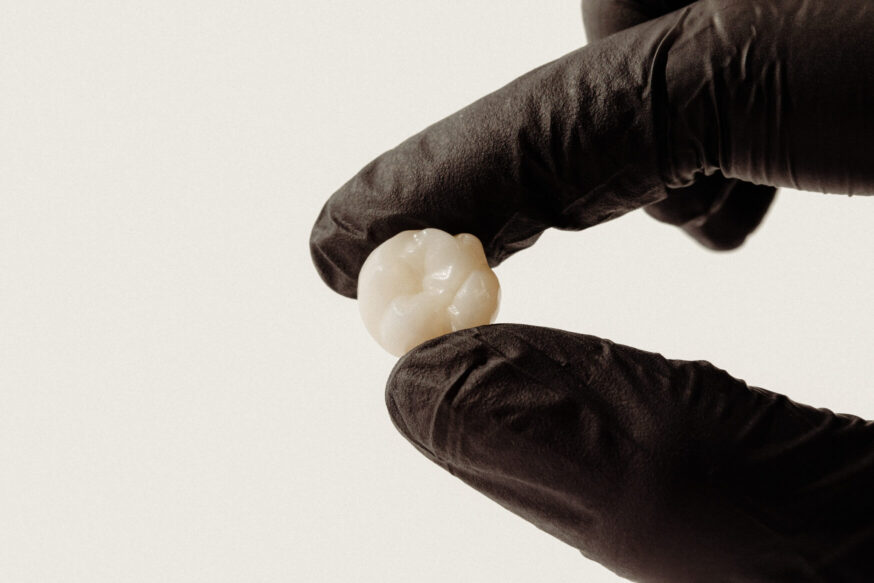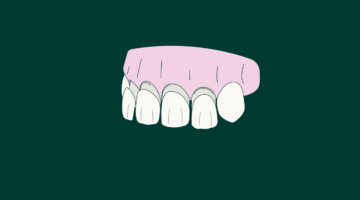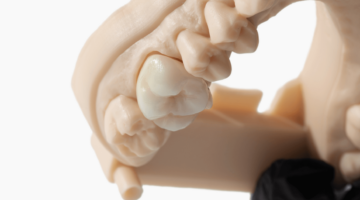Porcelain-fused-to-metal (PFM) crowns were once considered the “gold standard” in crowns. Once they knocked gold crowns from the throne, of course. Now dentists are often exploring porcelain fused to metal vs zirconia differences and whether one is a better fit for their practice.
“In the past PFM was often the most aesthetic option,” says Jeannie Hughes, one of Dandy’s digital dental experts with 30 years of experience. But now, there are more aesthetic and often stronger options that include:
- eMax Lithium disilicate (material)
- Translucent aesthetic monolithic zirconia
- PFZ: Porcelain fused to zirconia
The progression of stronger materials with better aesthetics over the past 10 years has given dental professionals more options to consider.
“With the introduction of eMax crowns and other innovative options like translucent monolithic zirconia and PFZ, dentists now have the advantage of choosing from materials that not only look better but are also stronger,” says Hughes.
More options of aesthetically pleasing and stronger crowns are good for dentists and patients alike.
PFM & Zirconia crowns with Dandy
Dandy offers a variety of zirconia and PFM crowns. Explore all the crown and bridge materials offered by Dandy labs!
What is a PFM crown?
A porcelain-fused-to-metal-crown (PFM crown) is a popular type of restoration that combines the strength of a metal substructure with the aesthetic appeal of porcelain, for a natural-looking crown that gets high marks for durability.
A metal core is covered by porcelain, leaving no metal exposed, or a metal collar visible around the base. The collar is fabricated from a variety of metals, chosen for their strength and/or biocompatible properties.
The base used to create the metal core of PFM crowns are mostly made from the following metals:
- Non-Precious
- Semi-Precious Noble (61%)
- White-High Noble (60%)
- Gold-High Noble-Yellow (41%)
- Gold-High Noble-Rich Yellow (88%)
For decades PFM restorations were the most aesthetic option for dental crowns and bridges. The advances in the ceramic materials most accurately mimic a patient’s natural enamel but, often leave a visible dark line or shadow at the gumline.
As the price of gold steadily rose and the demand for dental crowns grew (thanks to a growing population living longer, dental insurance became more common, and the cosmetic dentistry boom), the industry was challenged to find more affordable and digital solutions.
That’s how Lithium Disilicate and CAD/CAM restorations were introduced to our industry in the early 2000s, says Hughes.
Pros of porcelain-fused-to-metal crowns
The continued improvement of crown material technology in dentistry has been iterative. Whenever a new dental lab material is introduced, it has likely been through a rigorous R&D process, perfected, and marketed as stronger, more aesthetic, and possibly more affordable than the previous options (not modern materials).
PFM crowns are more aesthetic than full contour metal restorations, stronger than all-porcelain restorations, and often more affordable than almost all modern options.
For long-span bridges, metal substructure can sometimes be more beneficial than zirconia restorations.
Digital dental technology, manufacturing, and materials are quickly evolving.
Cons of porcelain-fused-to-metal crowns
Porcelain and PFM crowns are going the way of the traditional impression, now that we have digital intraoral scanning. They have been a durable, fine-looking tooth replacement for decades, but when compared to ultra-durable zirconia, they are less aesthetically pleasing and less durable. They also may require more complicated implant procedures, because a hand-made PFM crown, determined and fabricated from an impression mold, is a less precise prosthetic than something milled from a digital scan.
Other cons of PFM crowns are not cons by comparison but long-running negatives about the crown type. “The metal coping is sometimes visible and appears as a dark line or shadow along the gumline,” says Hughes. “Over time, as the gingiva recedes, that dark line will become more visible.”
Biocompatibility can also be an issue for some patients with metal allergies, this is more common with non-precious metals in PFM restorations. For cases where a conservative preparation is necessary, PFM may not be a suitable option. “Because there needs to be sufficient clearance for the metal coping, opaquer, and porcelain additional reduction is necessary compared to monolithic restorations,” says Hughes.
What are zirconia crowns?
Zirconia crowns are a newer material found in tooth replacement—made of a translucent metallic oxide that does a great job approaching the look of natural teeth while still providing unbelievable toughness and durability.
Full contour zirconia restorations can be fabricated 100% in the digital CAD/CAM workflow and are not as labor intensive as fabricating PFM—a restoration which is extremely labor intensive says Hughes.
“There is also no risk of bond failure since the material is monolithic versus PFM where there are a few layers where bond failure can happen and the porcelain can easily break and/or fracture,” she says.
Unlike PFMs which are porcelain layered and baked over a metal coping or frame, monolithic zirconia is one solid material throughout.
Before all porcelain, lithium disilicate, and zirconia restorations, the only monolithic restoration was a full gold crown or any metal crown that lacked aesthetics for anterior restorations (unless the patient’s aesthetic is rapper or pirate).
Another consideration in the zirconia vs porcelain-fused-to-metal debate? Strength. While monolithic restorations are stronger due to their simpler construction and materials performance, the metal in the substrate can be indicated as a better restoration if there is enough reduction.
Pros of zirconia crowns
Zirconia crowns are more expensive than the old-fashioned porcelain and PFM crowns, but compared to some modern materials, still relatively cost-effective. And you get what you pay for: they are much, much more durable and resilient than porcelain. They are biocompatible and won’t cause reactions, last quite long, and do incredible work covering stained and off-color teeth.
Cons of zirconia crowns
Compared to a PFM crown, zirconia can sometimes be too strong: those who have strong jaws and/or grind their teeth at night may find that a zirconia crown could do minor damage to other, opposing teeth. However, some strong biters (those with bruxism) have had success, as zirconia itself will not fracture typically, no matter how strong the jaw. In general, zirconia is a terrific option that is quickly helping make porcelain-fused-to-metal crowns a thing of the past.
Porcelain-fused-to-metal vs zirconia crowns
So: which do you imagine is “better” between porcelain-fused-to-metal crowns and zirconia crowns? Let’s look at use cases to guide the way.
When to use zirconia crowns
Zirconia crowns are praised for their durability and strength, which is why they’re often recommended for posterior teeth as they do the majority of the heavy lifting when it comes to breaking down food.
In general, as you’re considering PFM vs zirconia, the functionality of a zirconia crown is still typically better than PFM. They are stronger, easier to install, and leave more tooth base—that last factor alone might help your patient avoid gingivitis.
“Full contour zirconia is a great restoration for patients with bruxism, cases where there is limited room for reduction while still keeping aesthetics,” says Hughes.
If you’re analyzing the porcelain-fused-to-metal vs zirconia cost differences, usually PFM crowns will be more affordable initially. That being said, zirconia is more cost-effective in many cases if you consider the long-term durability of the product.
As far as appearances go, zirconia crowns have more translucency and tend to be better at tooth-matching than porcelain. Your patients will also appreciate that there is no small metal ring at the gumline or risks of discoloration down the line.
This zirconia vs porcelain fused to metal debate might just be tilting in one direction…
When to use PFM crowns
There might be times when PFM crowns are the better solution based on a patient’s mouth, budget, and oral health. PFM has been around and championed since the 1950s. It can have excellent aesthetics if a skilled technician is doing the job. It’s also good for small spaces, like certain dental bridges, and when there’s minimal distance for implants.
But, PFM poses a lack of strength in comparison to zirconia restorations. “Porcelain is weak, fractures easily, and considering the megapascal (MPa) of porcelain is only around 120 versus around 900 to 1,400 for full contour zirconia, you’ll get more bang for your buck with zirconia,” Hughes says.
Other potential issues with PFM include bond failure, when the bond between the metal, opaquer, and porcelains often fails and causes a broken or fractured crown, she says.
“There are some instances where a metal substrate may be the most suitable option for long-span bridges but this depends on the case and the doctors’ preferences,” Hughes says.
Porcelain-fused-to-metal vs zirconia crowns—which is better?
There is nothing wrong with PFM crowns, but there is a better option (or two) on the market. Zirconia crowns are stronger, fit better, are easier to fabricate through a fully digital workflow (by digital labs like Dandy), have better aesthetics, and give your practice trickle-down benefits, like more efficiency, more chair time available to grow your practice, and less waiting time after scanning and deciding on treatment.
“There are some instances where a doctor might choose PFM over zirconia but we are likely to see less and less of this as knowledge, technology, and materials advance,” says Hughes.
The time comes in all industries when technology improves to a point where adoption is a no-brainer. A small cost difference is worth all the benefits for patients and practices when comparing PFM crowns to Zirconia, milled by a lab that has perfect digital measurements from an intraoral scan. You get stronger, longer-lasting, prettier, and more functional replacement crowns and bridges with easier implantation. Zirconia is the way of today, and digital dentistry advancements and do-it-all labs like Dandy are helping clear the way.
Learn more about all the ways Dandy’s all-in-one digital lab solutions can help.



